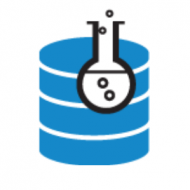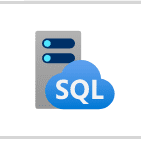Currently Browsing: Azure




















SQL Server / PowerShell / Check SQL Server version and a current patch level for all servers you specify using PowerShell
Posted by Barac in Azure, Powershell, SQL Server on Apr 24th, 2022 | 0 comments
Script Download: SQLServerUpdateStatus Download Summary: Check SQL Server Version and the current patch level for all servers you specified. As well check the latest patches/updates available for the installed SQL Server version and send an email with results. Description: SQL Server Instance Update Status PowerShell script which can be invoked remotely from another PC through the command line, with PowerShell or executed remotely through task scheduler adding servers names. The script is checking server registry values for (Version, PatchLevel, Edition, SQLPath), you can choose and add other values...

DATA SATURDAY #13 MINNESOTA / Virtual Event / One-day free virtual event
Posted by Barac in Azure, DATASATURDAY, SQL Server, SQLSATURDAY on Oct 12th, 2021 | 0 comments
WHAT IS DATA SATURDAY #13 – MINNESOTA Free virtual event for all data learners and professionals seeking to learn! Data Saturday Minnesota is training event for professionals who use the Microsoft data platform. Community speakers will offer sessions about cloud, analytics, database administration, business intelligence, AI and more. Don’t miss out on this FREE event!!! Sessions: Schedule Date and Location: Central Daylight Time (US), Saturday, 16th October, 8am – 7pm NZ time, Sunday, 17th October 2021 and starts at 2am – 12pm More information: DATA SATURDAY #13 –...

DIFINITY CONFERENCE 2022 / Auckland, New Zealand / The largest Data and AI conference in New Zealand
Posted by Barac in Azure, SQL Server on Sep 2nd, 2021 | 0 comments
WHAT IS DIFINITY CONFERENCE Microsoft AI, Data, and Power Platform Conference Difinity is the largest Microsoft Data, AI, Power BI, Power Platform and Business Applications Conference in New Zealand focusing on Data Platform, AI, Business Intelligence, Business Applications, Power Platform, and Analytics. IT Decision Makers, Developers, Business Analysts, IT Professionals, BI Managers, BI Professionals, Database Administrators, Architects, Digital & Big Data business leaders, and Consultants will gather for two consecutive days of learning. Difinity Conference been running in New Zealand since...

Azure / PowerShell / Deploy Azure SQL database DR environment with integrated azure SQL Analytics Solution using PowerShell
Posted by Barac in Azure, Powershell, SQL Server on Mar 6th, 2021 | 0 comments
Script Download: AZ_Module_Deploy_Azure_SQL_Database_DR_Environment_With_AzureSQL_Analytics_Solution_Blog-1Download Summary: Use PowerShell to create cloud DR environment using Azure SQL Databases (PaaS) with integrated azure SQL Analytics Solution and send Email Report with the connection string details. Description: Use PowerShell to deploy cloud service with Azure SQL Database (PaaS) with good resilience to outages (GEO Replications, Failover Groups) and with integrated azure SQL Analytics Solution. PowerShell: The script will include the following: Connect to Azure Account;Use existing or create...

Azure SQL Managed Instance / Database Migration Service (DMS) / Online Data Migration / Migrate your database to Azure SQL Managed Instance
Posted by Barac in Azure, SQL Server, SQL Tips and Tricks on Dec 23rd, 2019 | 0 comments
Using Azure Database Migration Service (DMS) you can easily migrate your databases from multiple sources to Azure Data platforms with minimal downtime. For this example we are going to use following: Azure Database Migration Service (DMS), Premium tier (4 vCores) DMS Project: Online Data Migration Source: SQL Server 2017, 8CPU, 64GB Memory Target: Azure SQL Managed Instance, 16 vCores, 80GB Memory More details about DMS and how to download and install you can find in this MS article. First step we will be to deploy Database Migration Service. Specify a name for the database migration service, and...

Azure SQL Managed Instance / Migration / Database Experimentation Assistant (DEA) / Evaluate your workload before you migrate your database to Azure SQL Managed Instance
Posted by Barac in Azure, SQL Server on Nov 11th, 2019 | 1 comment
Using Database Experimentation Assistant (DEA) you can evaluate your current production workload from your current environment and analyze how will that workload perform in your new targeted environment. For this example we are going to use following: Source: SQL Server 2017, 32CPU, 256GB Memory Target: Azure SQL Managed Instance, BC Gen5 (16 vCores, 80GB Memory) DEA VM: SQL Server 2017, 4CPU, 32GB Memory Workload: 10minutes XE trace (XEL), size 19.9GB I will use DEA to capture, analyze and compare source and target workloads. More details about DEA and how to download and install...

Azure SQL Managed Instance / Migration / Data Migration Assistant (DMA) / Assess on-premises SQL Server instance
Posted by Barac in Azure, SQL Server on Oct 30th, 2019 | 0 comments
Before we migrate our database to the cloud we need to assess our on-premises SQL Server instance and Data Migration Assistant (DMA) tool can help us with that. Using Data Migration Assistant (DMA) tool we can detect potential compatibility issues which may impact our database functionality after migration to Azure SQL managed Instance. DMA main functionalities: Discover issues that can affect an upgrade to an on-premises SQL Server Discover new features in the target SQL Server platform Migrate an on-premises SQL Server instance to a modern SQL Server instance If you want to find more details about...

Azure SQL Managed Instance / Migration from on-premises SQL Server instance to Azure SQL Managed Instance
Posted by Barac in Azure, SQL Server on Oct 9th, 2019 | 0 comments
Database migration from on premises SQL Server instance (SQL Server 2017) to Azure SQL Managed Instance. With series of posts I will try to describe whole database migration process from on premise SQL Server to the cloud. First step will be to determine whether Azure SQL Managed Instance is compatible with the database requirements of business application. Step 1. Assess managed instance compatibility I used Data Migration Assistant (DMA) to detect potential compatibility issues impacting database functionality on Azure SQL managed Instance. I was looking for any compatibility issues such as breaking...

Azure SQL Managed Instances / SSMS / Connect to SQL Managed Instance / Public Endpoint
Posted by Barac in Azure, SQL Server, SQL Tips and Tricks on Sep 5th, 2019 | 0 comments
In the previous post we had example how to connect to Azure SQL Managed Instance from Azure VM within same VNet using private endpoint Now I will show you how to connect to the SQL Managed Instance from your remote location using public endpoint. First go to your SQL MI and select Virtual Network Enable Public Endpoint (data) option Public endpoint provides the ability to connect to Managed Instance from the Internet without using VPN and is for data communication (TDS) only. After enabling your SQL MI will have 2 connection strings, private and public For the remote access via public...

Azure SQL Managed Instances / SSMS / Connect to SQL Managed Instance / Private Endpoint
Posted by Barac in Azure, SQL Server, SQL Tips and Tricks on Aug 30th, 2019 | 0 comments
There are different ways to connect to SQL Managed Instance using SSMS. One of the easiest ways to do that is using Private Endpoint. Azure SQL Managed Instance provides a private endpoint to allow connectivity from inside its virtual network. In this example we are going to use azure VM within the same Virtual Network as SQL Managed Instance. You should create VM inside the same VNet but different subnet. When you create SQL Managed Instance you will have following resources in you Resource Group: SQL managed instance Virtual Network Network security group Route table Virtual cluster As well you will...





